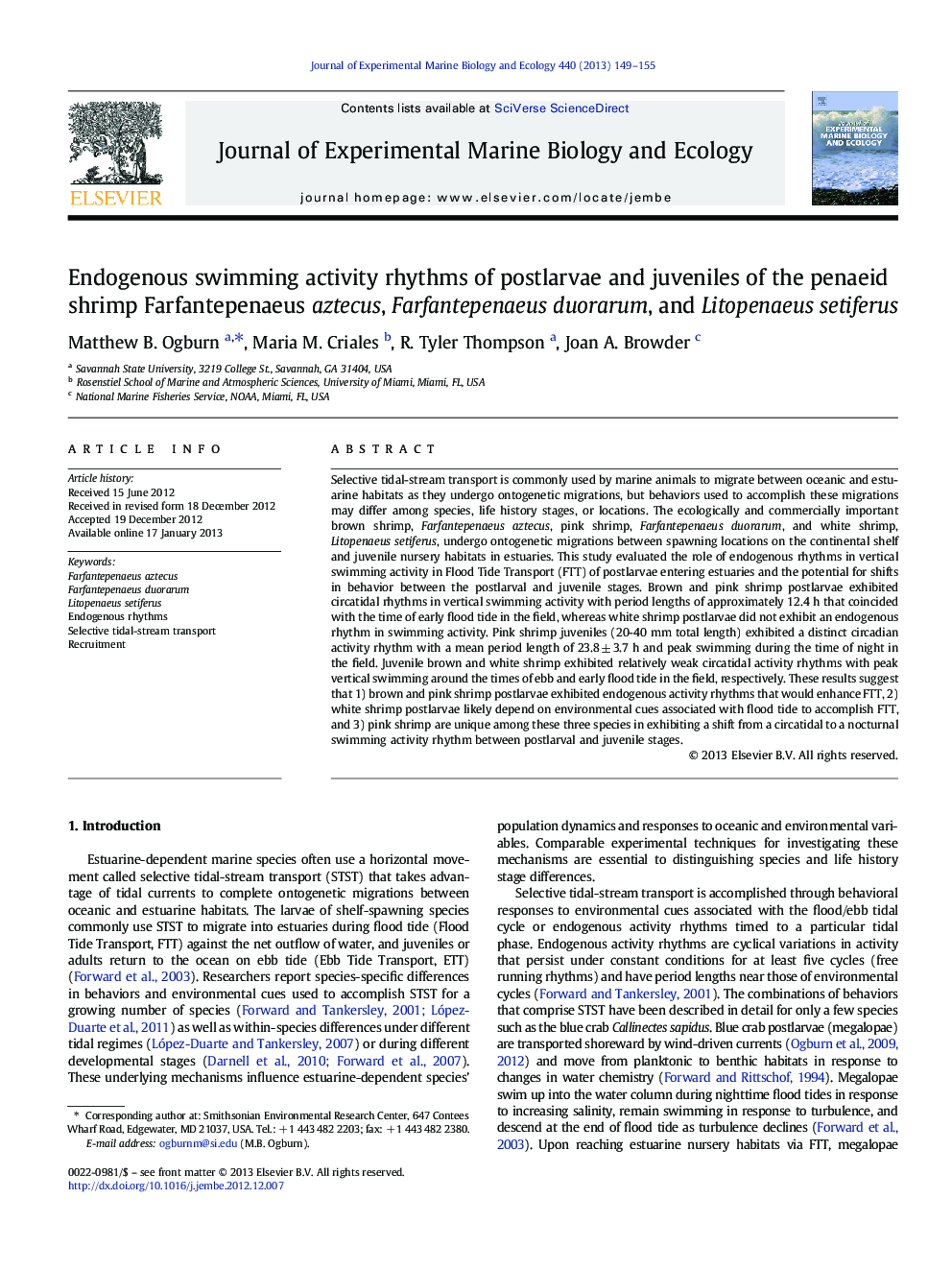| Article ID | Journal | Published Year | Pages | File Type |
|---|---|---|---|---|
| 4395812 | Journal of Experimental Marine Biology and Ecology | 2013 | 7 Pages |
Selective tidal-stream transport is commonly used by marine animals to migrate between oceanic and estuarine habitats as they undergo ontogenetic migrations, but behaviors used to accomplish these migrations may differ among species, life history stages, or locations. The ecologically and commercially important brown shrimp, Farfantepenaeus aztecus, pink shrimp, Farfantepenaeus duorarum, and white shrimp, Litopenaeus setiferus, undergo ontogenetic migrations between spawning locations on the continental shelf and juvenile nursery habitats in estuaries. This study evaluated the role of endogenous rhythms in vertical swimming activity in Flood Tide Transport (FTT) of postlarvae entering estuaries and the potential for shifts in behavior between the postlarval and juvenile stages. Brown and pink shrimp postlarvae exhibited circatidal rhythms in vertical swimming activity with period lengths of approximately 12.4 h that coincided with the time of early flood tide in the field, whereas white shrimp postlarvae did not exhibit an endogenous rhythm in swimming activity. Pink shrimp juveniles (20-40 mm total length) exhibited a distinct circadian activity rhythm with a mean period length of 23.8 ± 3.7 h and peak swimming during the time of night in the field. Juvenile brown and white shrimp exhibited relatively weak circatidal activity rhythms with peak vertical swimming around the times of ebb and early flood tide in the field, respectively. These results suggest that 1) brown and pink shrimp postlarvae exhibited endogenous activity rhythms that would enhance FTT, 2) white shrimp postlarvae likely depend on environmental cues associated with flood tide to accomplish FTT, and 3) pink shrimp are unique among these three species in exhibiting a shift from a circatidal to a nocturnal swimming activity rhythm between postlarval and juvenile stages.
► We compare endogenous vertical swimming behavior of three species of penaeid shrimp. ► Differences in behavior were observed among species and life history stages. ► Comparative studies of behavior are critical to interpreting shrimp distributions.
